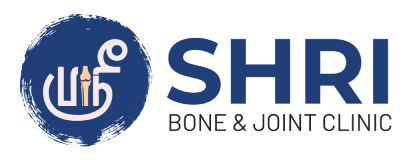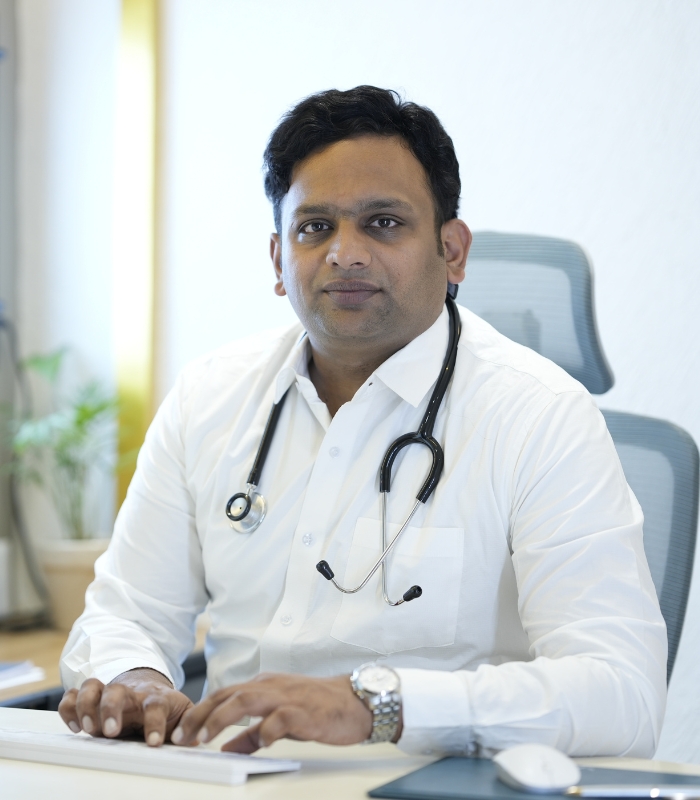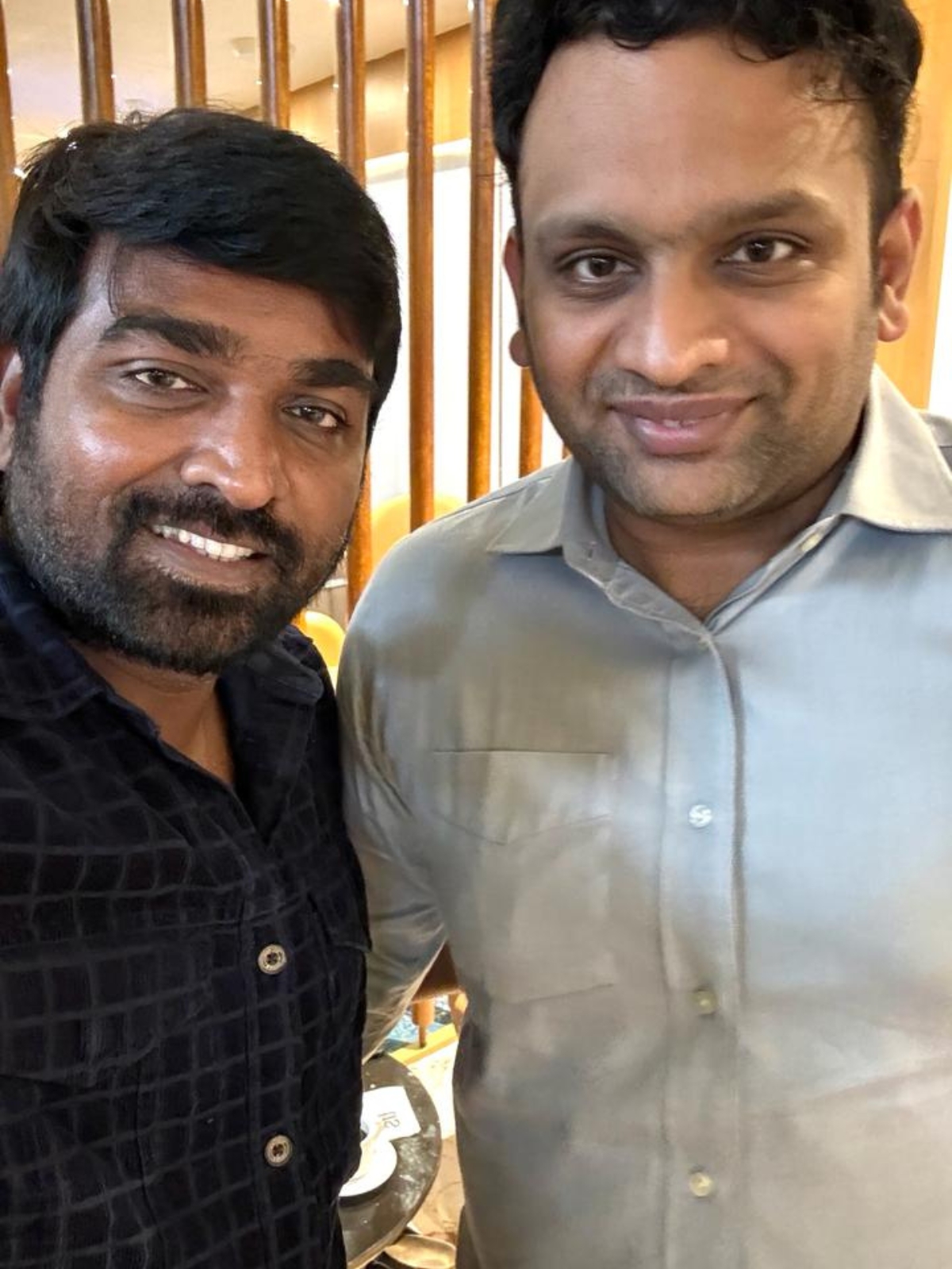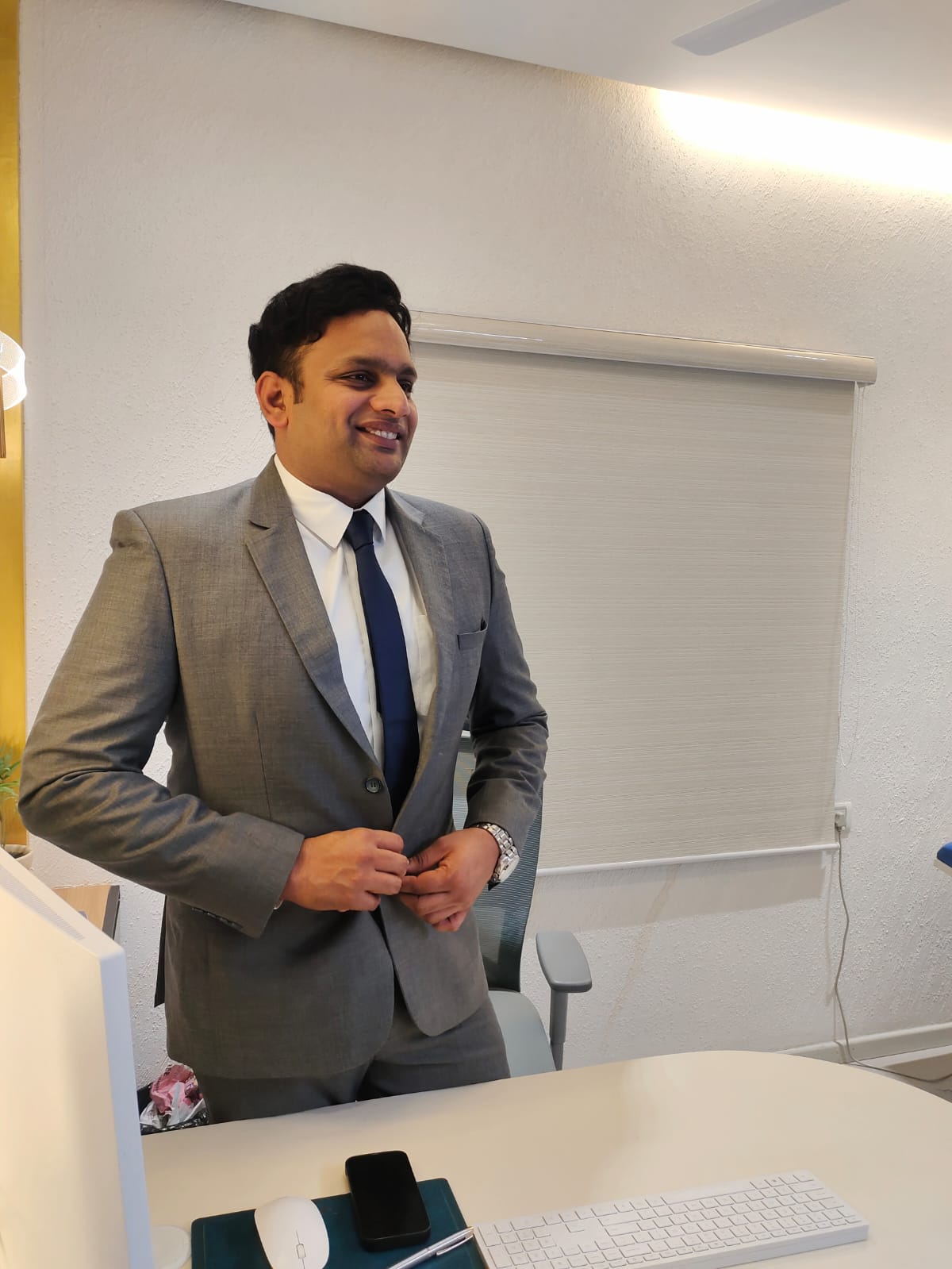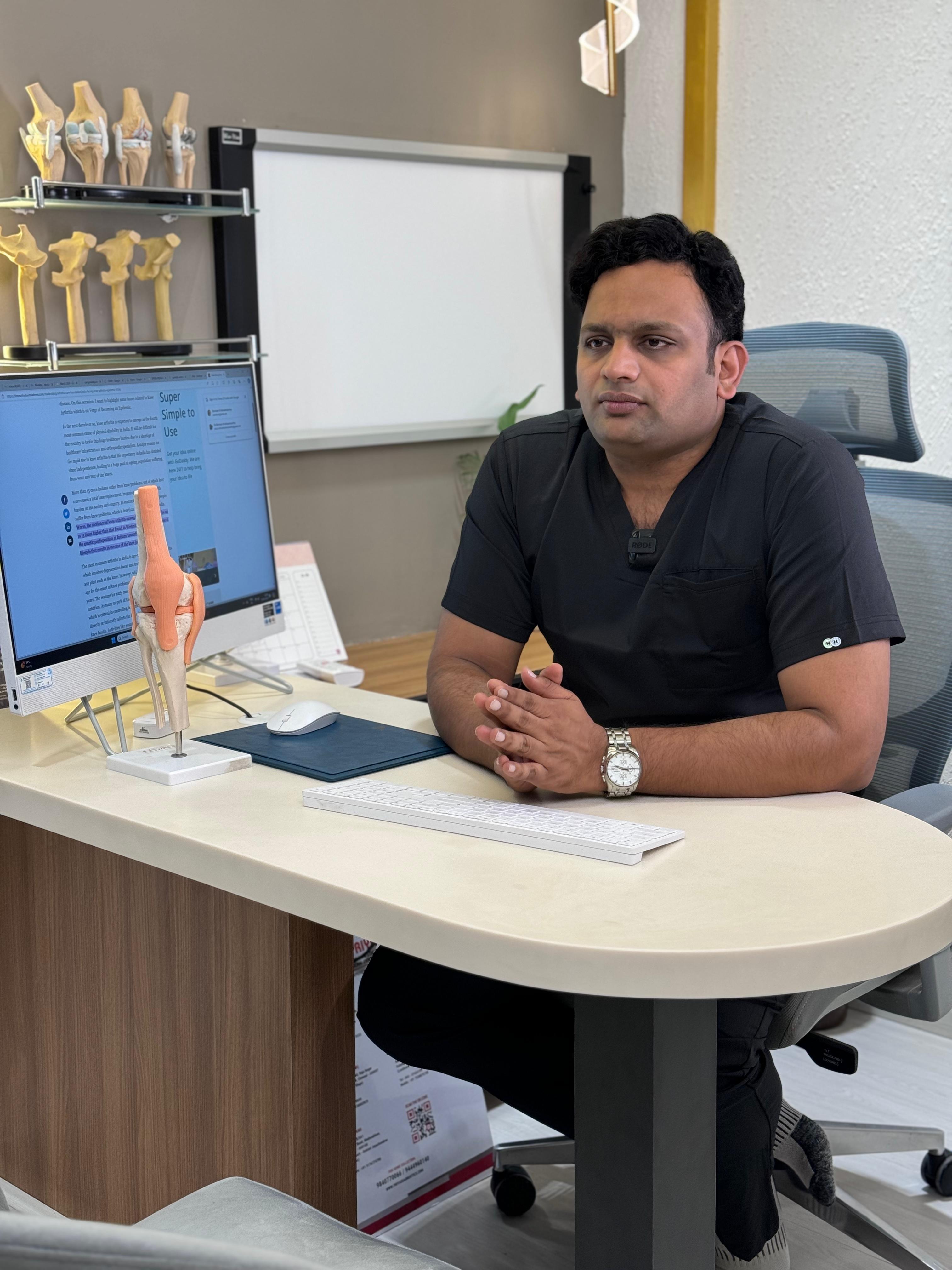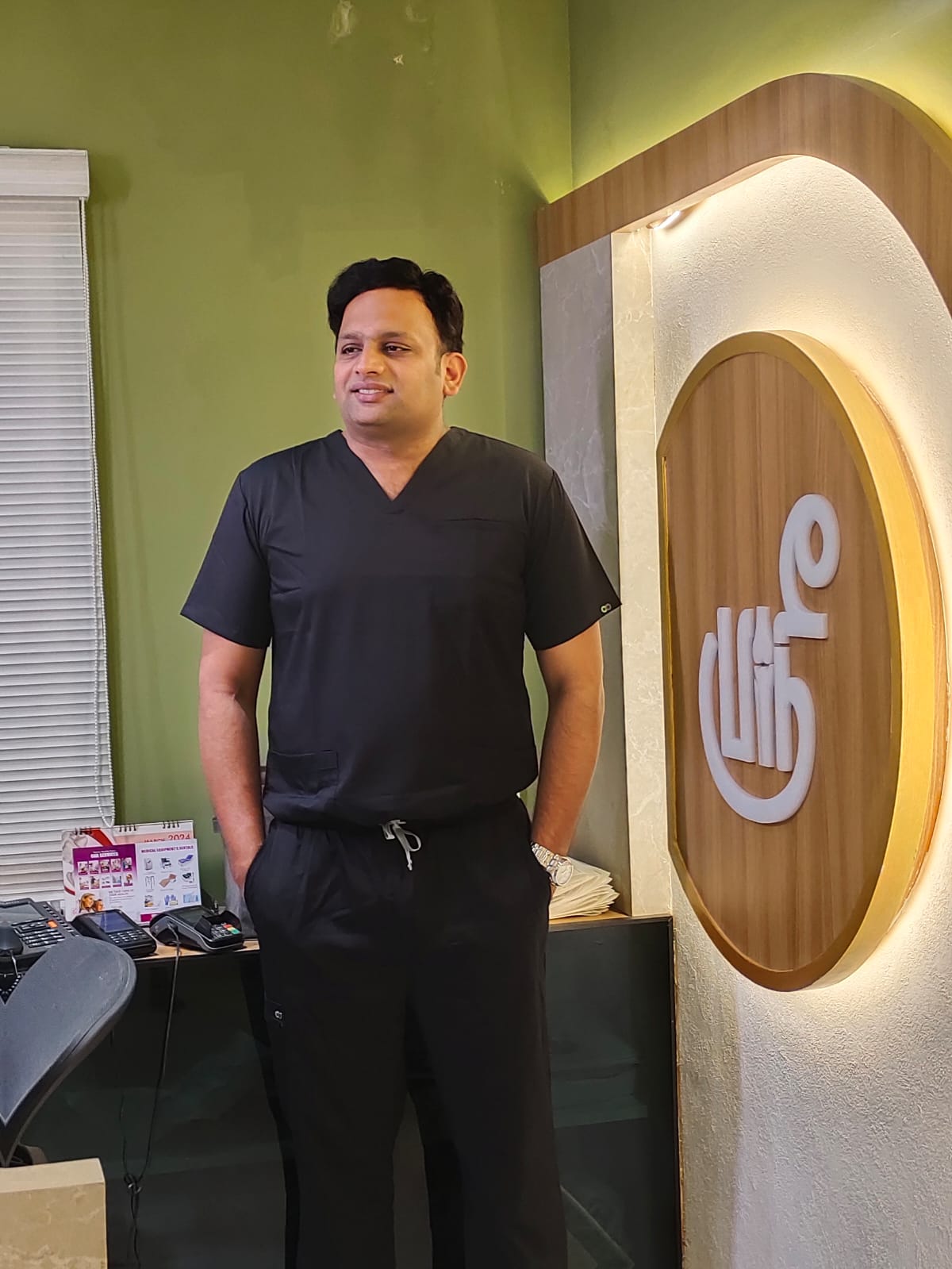What is Reverse Shoulder Replacement / Arthroplasty?
Reverse Shoulder replacement, also known as Reverse Shoulder Arthroplasty, is a surgical procedure used to treat severe shoulder joint pain and dysfunction typically resulting from a condition such as arthritis, rotator cuff tears, or failed previous shoulder surgeries.
During the reverse shoulder replacement surgery, the damaged parts are removed and replaced with artificial components. In traditional shoulder replacement, the artificial joint mimics the natural anatomy of the shoulder, with a metal ball replacing the damaged humeral heads and a plastic socket replacing the damaged glenoid cavity of the shoulder blade.
If the rotator cuff muscles are severely damaged or torn, a traditional shoulder replacement may not be adequate because the rotator cuff muscles are essential for shoulder stability and function.
In reverse shoulder replacement, the position of the ball and socket components of the artificial joints are reversed. The metal ball is attached to the shoulder plate, and the plastic socket is attached to the upper end of the humerus (arm bone).
This procedure is particularly beneficial for patients with severe rotator cuff tears, arthritis with irreparable rotator cuff damage, complex fractures of the proximal humerus (upper arm bone), or failed previous shoulder surgeries.
Indications for Total Shoulder Replacement
-
Osteoarthritis
Degenerative joint disease characterized by the breakdown of cartilage in the shoulder joint, leading to pain, stiffness, and decreased range of motion.
-
Rheumatoid arthritis
An autoimmune disease causing inflammation of the synovium (lining of the joint), leading to cartilage destruction, joint deformity, and pain.
-
Post-traumatic arthritis
Arthritis developing after a severe shoulder injury or fracture, resulting in cartilage damage and joint degeneration.
-
Rotator cuff arthropathy
Advanced rotator cuff tears with associated arthritis, leading to severe pain, weakness, and loss of shoulder function.
-
Avascular necrosis (osteonecrosis)
Death of bone tissue due to poor blood supply, resulting in shoulder joint collapse and arthritis.
-
Failed previous shoulder surgeries
Individuals who have undergone unsuccessful shoulder surgeries, such as failed rotator cuff repair or previous shoulder arthroplasty, and continue to experience significant pain and dysfunction.
-
Severe fractures of the proximal humerus
Complex fractures of the upper arm bone near the shoulder joint that cannot be adequately treated with nonsurgical methods.
Severe shoulder pain and dysfunction impair daily activities and quality of life, which cannot be managed effectively with conservative treatments such as medications, physical therapy, or injections.
Surgical Procedure
-
Anesthesia
The patient is placed under general Anesthesia, which means they are unconscious during this procedure. Regional anesthesia, such as nerve block, may also be used to provide pain relief during and after surgery.
-
Incision
The surgeon makes an incision on the front or side of the shoulder, typically several inches in length, to access the shoulder joint.
-
Preparation of the Glenoid
The surgeon removes any damaged or arthritic tissue from the glenoid (socket) of the shoulder blade using specialized surgical instruments. The glenoid is then prepared to receive the artificial socket component of the prosthesis.
-
Preparation of the Humerus
The surgeon removes the damaged or arthritic head of the humerus (upper arm bone) and prepares the remaining bone to receive the artificial ball component of the prosthesis. In cases where there is severe rotator cuff damage, the humeral part may be placed lower on the humerus to optimize shoulder function.
-
Implant Placement
The artificial components of the reverse shoulder prosthesis are then inserted into the prepared bone surfaces. The metal ball component is attached to the shoulder blade, while the plastic socket component is attached to the upper end of the humerus. These components are secured in place using surgical cement or press-fit techniques.
-
Closure
Once the prosthesis is in place, the surgeon closes the incision with sutures or staples and applies sterile dressings to the surgical site.
-
Postoperative Care
After surgery, the patient is typically monitored in the recovery room before being transferred to a hospital room or discharged home. Physical therapy and rehabilitation are essential components of the recovery process to help restore shoulder function, strengthen the surrounding muscles, and prevent complications such as stiffness or instability.
Rehabilitation and Recovery
First Six weeks (Early postoperative phase)
- Emphasis is placed on effectively managing pain, safeguarding the incision, and minimizing swelling.
- A sling is expected to be utilized for comfort and support during this phase.
- Additionally, gentle pendulum exercises, passive range of motion exercises facilitated by a physical therapist and light isometric exercises to preserve muscle activation are typical activities.
Six to twelve weeks (intermediate postoperative phase)
- Emphasis is placed on gradually augmenting the range of motion and engaging in strengthening exercises.
- During this stage, you will initiate active-assisted range-of-motion exercises, assisting your therapist in moving your shoulder.
- Additionally, introductory strengthening exercises targeting the rotator cuff and scapular muscles will be incorporated.
Twelve to Twenty-Four stages (Last Postoperative Phase)
- The focus is on enhancing strength through exercises, refining proprioception, and engaging in functional activities.
- You will advance to more demanding strengthening exercises and proprioception drills aimed at enhancing balance and coordination in your shoulder. Additionally, you will begin practicing functional tasks such as reaching, lifting, and dressing.
Four to Eight months and beyond (Return to Activity)
- The emphasis is on gradually reintegrating your preferred activities.
- Upon approval from your doctor and physical therapist, you can gradually resume most activities, including sports and hobbies. However, it’s crucial to heed your body’s signals and refrain from strenuous activities that may lead to discomfort or setbacks.
Risks and Complications
-
Infection
Despite precautions, there is a risk of disease following surgery. This can manifest as localized redness, swelling, warmth, or fever. In severe cases, surgical intervention may be necessary to address the infection.
-
Implant Loosening
Over time, the artificial components of the shoulder prosthesis may loosen or wear out, leading to instability, pain, and decreased function. Revision surgery may be required to address implant failure.
-
Instability
The reverse shoulder prosthesis alters the biomechanics of the shoulder joint, which can increase the risk of instability or dislocation. Patients may need to avoid specific movements or activities to minimize this risk.
-
Nerve Injury
Damage to nerves surrounding the shoulder joint can occur during surgery, leading to temporary or permanent weakness, numbness, or tingling in the arm or hand. Physical therapy and rehabilitation can help address nerve-related symptoms.
-
Fracture
Fractures of the humerus or scapula may occur during surgery or as a complication of the procedure. Additional surgery may be necessary to repair the fracture and stabilize the shoulder joint.
-
Limited Range of Motion
Despite improvements in pain and function, some patients may experience a limited range of motion in the shoulder following surgery. Rehabilitation efforts aim to maximize shoulder mobility and function.
-
Rotator Cuff Dysfunction
Although reverse shoulder replacement bypasses the need for a functional rotator cuff, weakness or dysfunction of the deltoid muscle can affect shoulder function and stability.
-
Blood Clots
There is a risk of developing blood clots (deep vein thrombosis) in the legs following surgery, which can potentially lead to more severe complications such as pulmonary embolism. Blood thinning medications and compression stockings may be prescribed to reduce this risk.
-
Allergic Reaction
Rarely, patients may experience an allergic reaction to the materials used in the shoulder prosthesis, resulting in localized inflammation or hypersensitivity reactions.
-
Other General Risks
Surgical risks such as bleeding, anesthesia complications, wound healing problems, and adverse medication reactions are also possible.
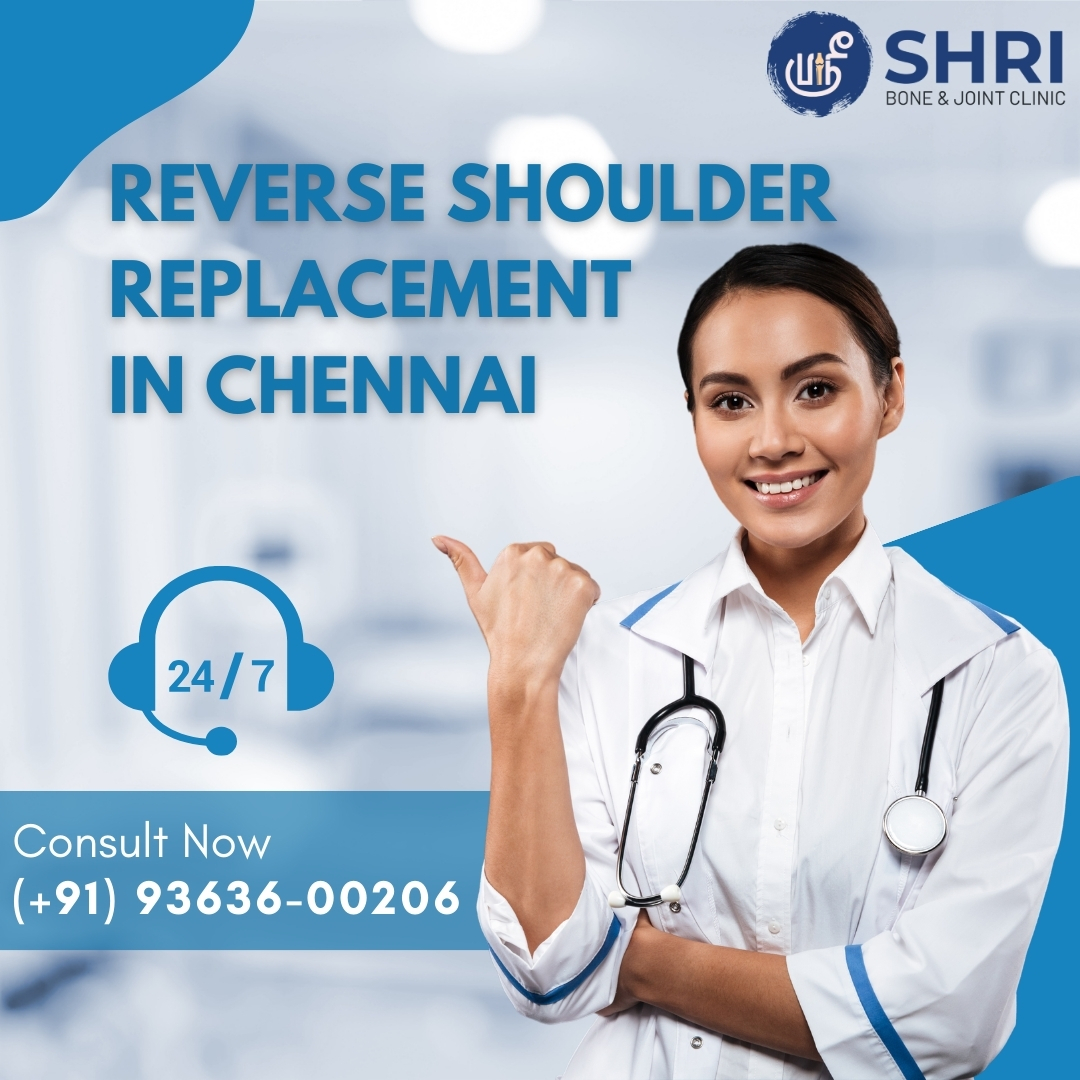
Reverse Shoulder Replacement Surgery Cost in Chennai, India
The cost of reverse Shoulder Surgery in Chennai can range from approximately ₹3,00,000 to ₹6,00,000.
Best Surgeon for Reverse Shoulder Replacement / Arthroplasty in Chennai, India
Dr Shriram Krishnamoorthy from Shri Bone & Joint Clinic is the best surgeon for Reverse Shoulder replacement in Chennai. He has over ten years of experience in this orthopedic field. He is a national board certified orthopedic surgeon.
His field of interest is knee and shoulder replacement surgery, knee and shoulder arthroscopy, cartilage preservation & repair, ortho biologics, and geriatric orthopedics. He has been a part of 1000 knee replacements in Fortis Malar Hospital.
Best Hospital for Reverse Shoulder Replacement / Arthroplasty in Chennai, India
Shri Bone & Joint Clinic is the best hospital for Reverse Shoulder Replacement in Chennai. We have two branches in Chennai, one from Adyar and the other in Aminjikarai. You can contact us at any time; we are available 24 hours a day.
You can get immediate relief for your knee-related problems from us. We provide better treatment for all kinds of knee-related problems at an affordable and minimal rate of medical charges.
Appointment requests for patients are scheduled on the same day, contingent upon the doctor’s availability. Emergency walk-in patients are accorded equal priority to those with pre-arranged appointments.
What is the success rate of reverse shoulder replacement?
According to findings, the survival rate of the reverse Shoulder replacement surgery is approximately 85% to 90%.
Which is better, total shoulder replacement or reverse shoulder replacement?
Total shoulder replacement is suitable for intact rotator cuffs, while reverse shoulder replacement is preferable for rotator cuff deficiency, offering improved function and pain relief in some instances.
How long will a reverse shoulder replacement last?
The longevity of a reverse shoulder replacement can vary depending on factors such as patient age, activity level, implant type, and overall health. On average, they can last 10-20 years or more.
How serious is reverse shoulder surgery?
Reverse shoulder surgery is a significant procedure with potential risks and complications, including infection, implant loosening, nerve injury, and limited range of motion. However, it can relieve considerable pain and improve shoulder function for appropriate candidates.
Better Health Care is Our Mission
Phone
Shri Bone & Joint clinic
No.14/31, 3rd Avenue Indira Nagar, Adyar, Chennai-600020
Phone: 044 4505 5509
